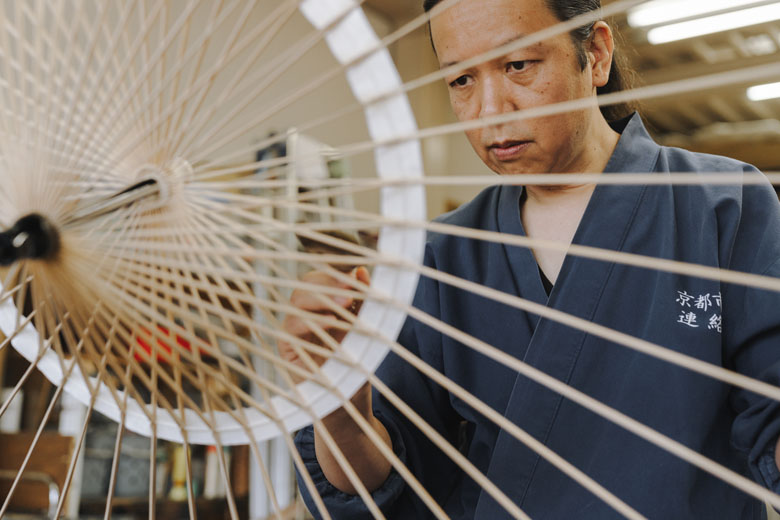See & Do
Kyo-wagasa Umbrellas: Their Beauty is the Result of Over a Thousand Years of Innovations
See & Do
Kyo-wagasa Umbrellas: Their Beauty is the Result of Over a Thousand Years of Innovations

Content Partner
Japanese high-end experience booking platform WABUNKA.We offer exclusive experiences such as behind-the-scenes tours of manufacturing facilities and temples.
Content Partner

Japanese high-end experience booking platform WABUNKA.We offer exclusive experiences such as behind-the-scenes tours of manufacturing facilities and temples.
Interview with Kotaro Nishibori, President of HIYOSHIYA Co., Ltd.

“Logical and completely functional, the beauty of a millennium of expertise encapsulated. That’s what’s attractive about these umbrellas,” said the owner of HIYOSHIYA Co.,Ltd., the only Kyo-wagasa (traditional Japanese umbrellas made in Kyoto) manufacturer in Kyoto now.
Japanese umbrellas have been used ornamentally as talismans and also as props for Kabuki or Nihonbuyo dance. Also, they have been long loved for the way that they complement the appearance of the person holding it. There is an old saying that women look most beautiful “in the darkness of night, in a gaze from afar, or under an umbrella.”
“When a beautiful umbrella is opened we say ‘the flower of the umbrella is blooming.’ The characteristics of the natural materials used for traditional Japanese umbrellas, the texture of bamboo and the light filtering through Japanese washi paper, compose a simple, refined beauty that is part of Japanese aesthetics.”
The wonders of Kyo-wagasa that brighten both your spirit and the air around you can be experienced at Hiyoshiya’s umbrella making workshop. Here’s the story behind this project.
Diving into the world of Kyo-wagasa artisans from a completely different career
“My wife was from the Hiyoshiya family, so I first encountered Kyo-wagasa when I visited my wife’s parents’ house before we got married. I remember the excitement I felt when I first saw them. I thought they were absolutely stunning.”
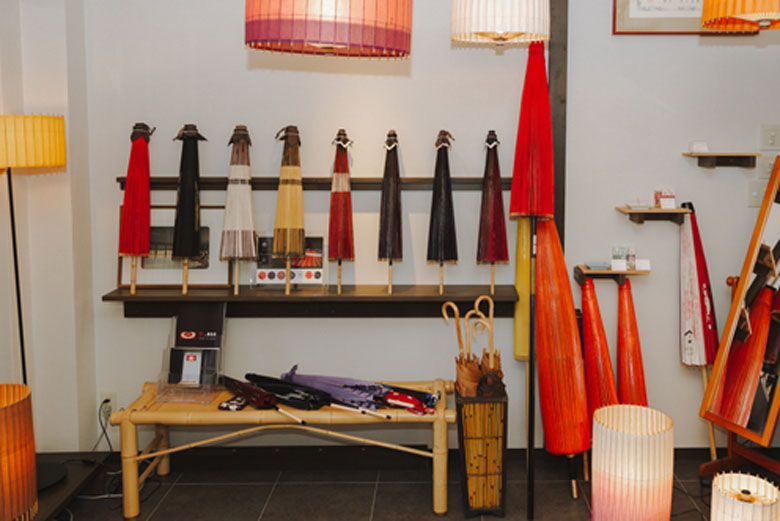
But, by that time, the demand was rapidly shrinking due to the growing market share of cheap, mass-produced western-style umbrellas, and the owner then had already decided on closing the business.
“I thought it didn’t seem right that something so beautiful would be gone from this world. I also thought that there must be needs for them somewhere, including a global niche market. Then, I proposed selling them through the internet, which wasn’t the standard yet. I had some experience using the internet for tourism-related operations at my former job, so I decided to use my experience to help my family business.”
And as he started to be in charge of the sales promotion, he gradually started to feel the urge of making the umbrellas himself. “After finishing work, I would travel from Wakayama to Kyoto, and record the production process videos. Then I spent days learning how to make the umbrellas through watching those videos.”, said Mr. Nishibori.
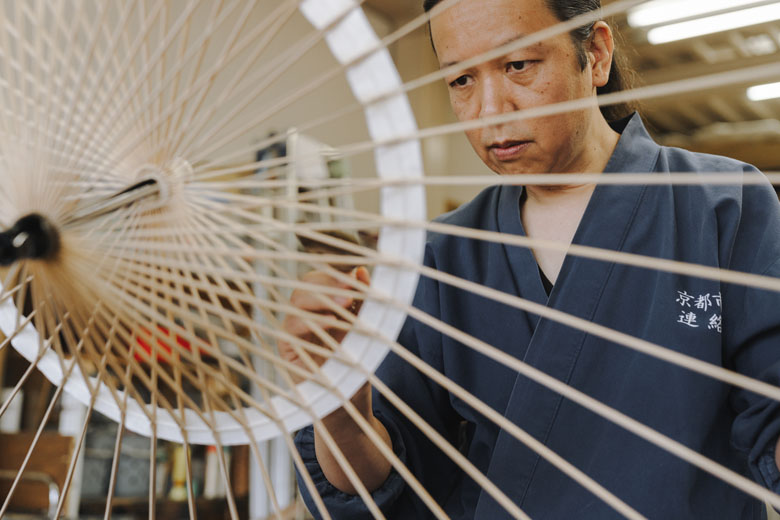
Rational and beautiful, the wonders of traditional Japanese umbrellas
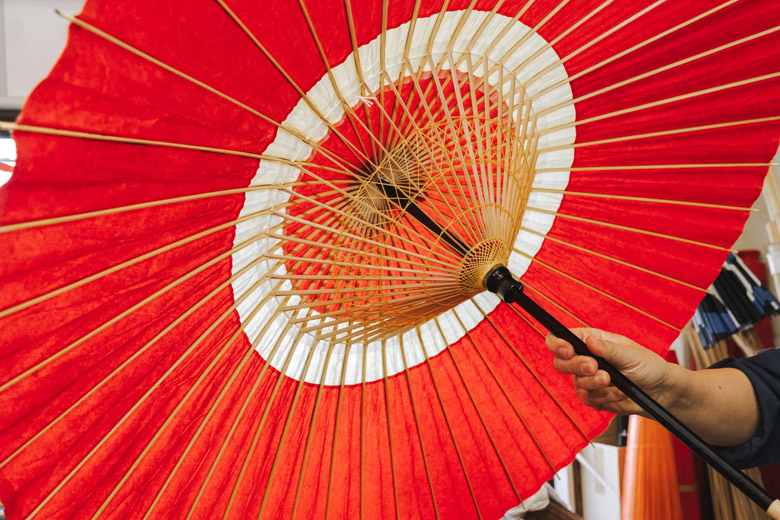
While Western umbrellas that we use on a daily basis are structured with eight ribs, Japanese umbrellas are made with 30 to 70 bamboo ribs. Unlike umbrellas that are mass produced by machines, traditional Japanese umbrellas are made only from natural materials with natural variations that require the expertise of the artisans who handle them. The whole process of the trial and error that took place on gaining those skills is almost unimaginable.
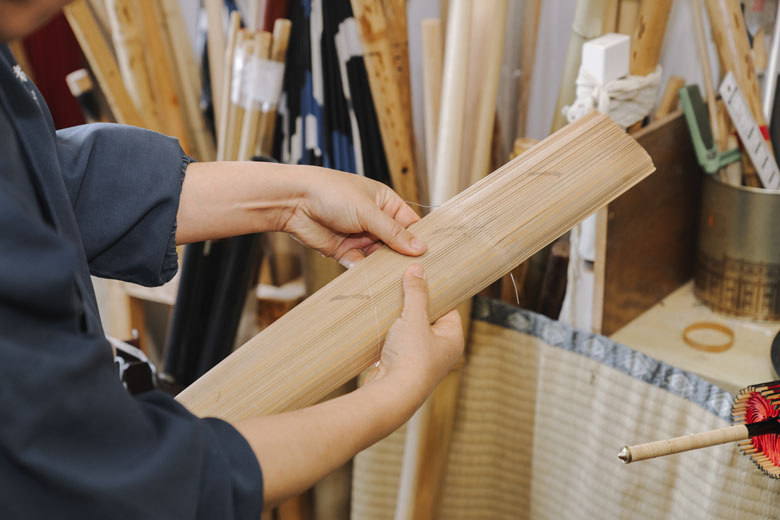
Continuing innovation as a long-standing business that turned into a global venture
Mr. Nishibori made a long-established Kyo-wagasa manufacturer expand the business globally in a single generation. When he registered his company, he announced the guiding credo, “Tradition is continuing innovation.” and the concept seems to continue to be integral.
“Japanese umbrellas have a great presence and visual impact, on the other hand, it is true that western-style umbrellas are easier to use for daily purpose. Still, it doesn’t mean that Japanese umbrellas are not good products. I feel that it’s just that they are losing their place in contemporary context. That is why I thought it’s time to change the perspective.”
Originally having thought of “giving the business a fresh start as a venture business that incorporates the contents of a long-established business,” Mr. Nishibori set out on developing and exporting new products using the same manufacturing methods as Japanese umbrellas such as KOTORI, and also worked on collaborative projects developing product designs with both international and domestic designers and architects, culturally promoting Japanese umbrellas around the globe.
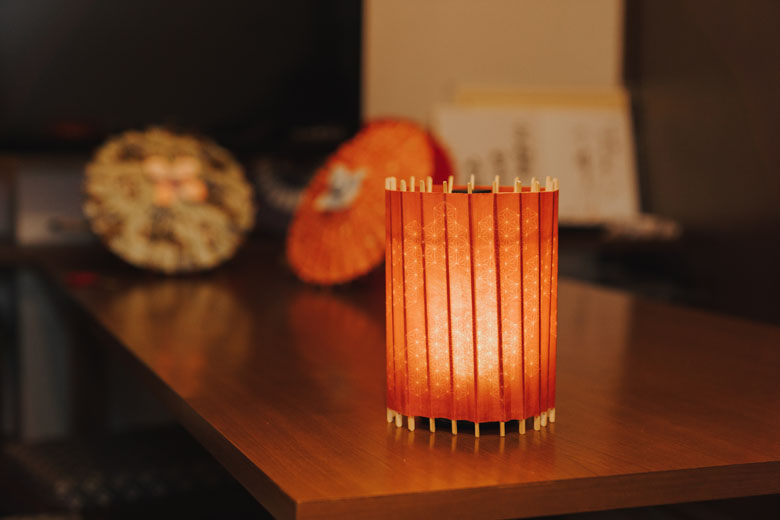
The number of organizations making Japanese umbrellas across the entire country is around ten or less. “I want to take the initiative in creating opportunities for people to see and get to know about Japanese umbrellas.”, says Mr. Nishibori. We also hope that many people will be able to actually feel the texture of the washi paper and other materials in their own hands, and have a hands-on introduction to the charm of Japanese umbrellas through the experience we are offering now.
Experiencing the “result of 1000 years of artisanship”
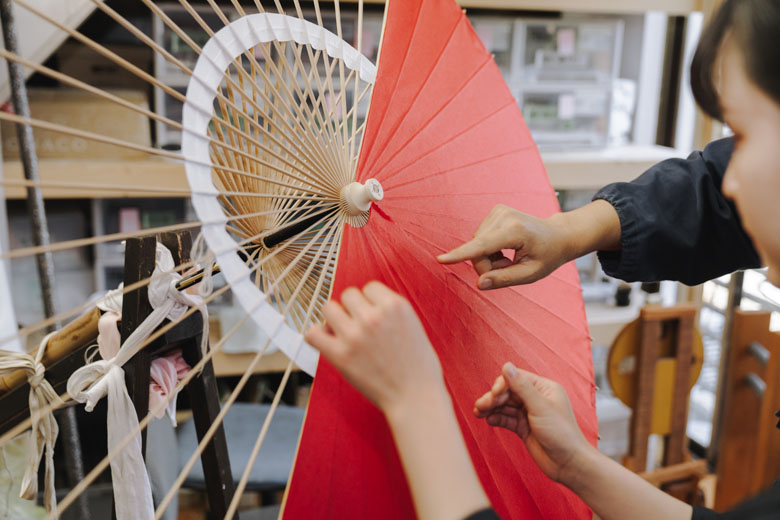
By experiencing the process of production, learning about the meanings behind its shape or the way the particular way the glue is applied, Mr. Nishibori said, “I hope that people will be inspired by the distinct beauty that the umbrellas have.”
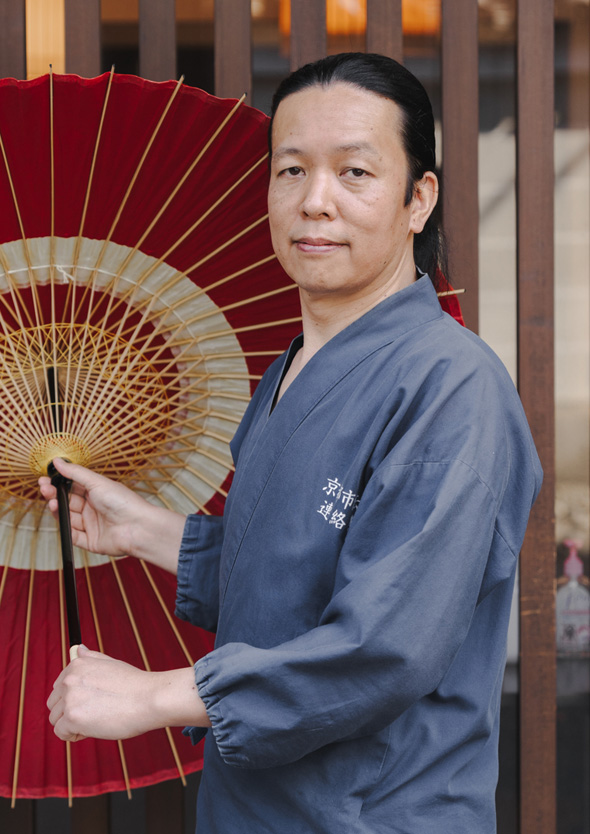
Take this opportunity to enjoy the world of Kyo-wagasa, their simple sophisticated beauty and elegant presence that adds color to the scenery.
Hiyoshiya
Address:546 Dodo-cho, Horikawa Teranouchi-higashi-iru, Kamigyo-ku, Kyoto City 602-0072
Special plan
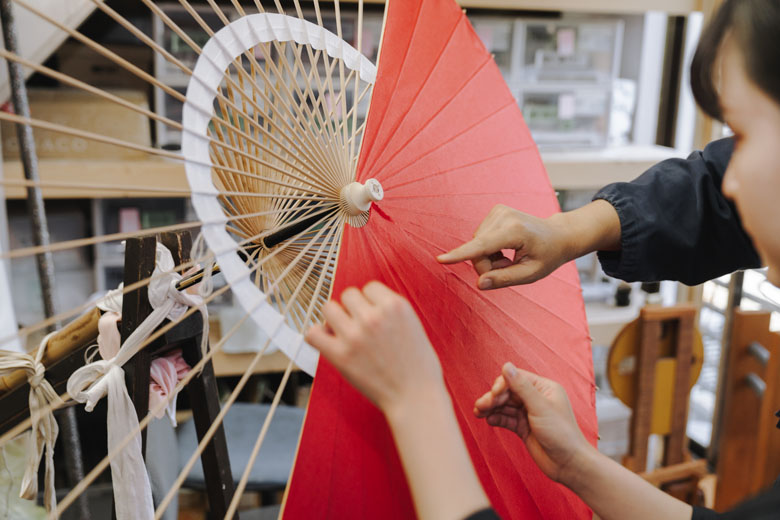
Read more article on Partner’s site

Language: Multilingual
https://wabunka-lux.jp/Japanese high-end experience booking platform WABUNKA.We offer exclusive experiences such as behind-the-scenes tours of manufacturing facilities and temples.


